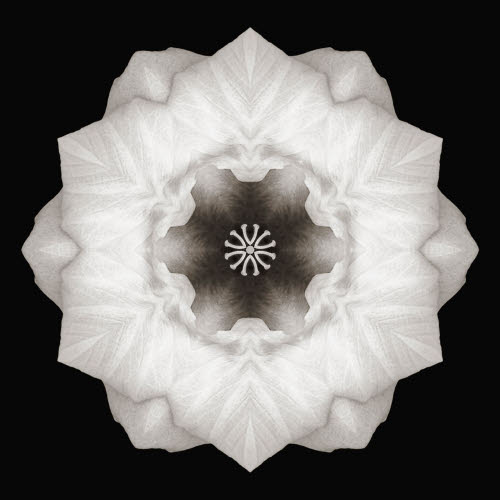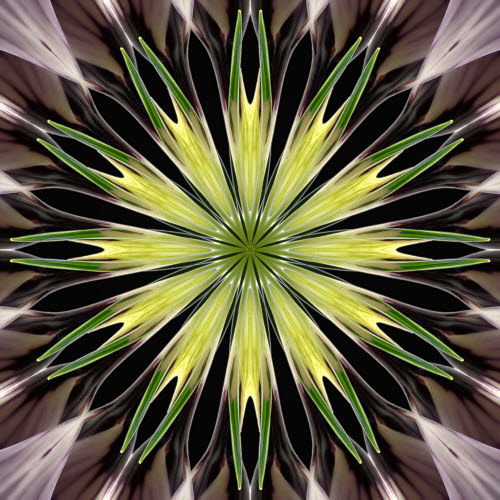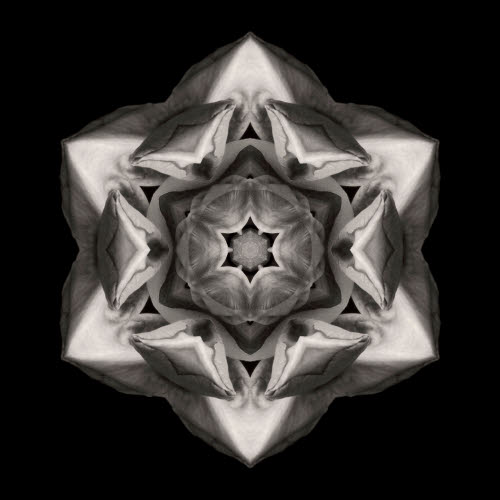
Pink Hibiscus II (sepia)
Click here to pop up the original Pink Hibiscus II
I’ve been experimenting with applying old photographic techniques to new, digitally created images and am curious to know how they compare, from your points of view. My own sense is that the architecture of the image is clearer, and there is a kind of quietness to the image that comes from the faded-brown look, but I’m interested in your responses, either here or in the Flower Mandalas Project group.
Then I got to thinking about how black-and-white photography can sometimes enable us to see more clearly the composition and feel the emotion of a scene. It distracts us from what we most immediately know about the subject — that blur of color — and forces us to look at what else is there. And I got to wondering how the clarity that can come from removing the color from an image might apply to other aspects of our lives. “Black and White Thinking” gets a bad rap because it implies we think only of one extreme or the other. But what about “Shades of Gray Thinking,” where we omit the most obvious and see the underlying structure of our lives and our world?
How do you, out there, practice “Shades of Gray Thinking”? Let us know, either as a comment to this post or in the discussion thread of the same name in the Art, Healing, and Transformation group
Thanks!
– David
Discussion:
‘Black and White Thinking’ in Shades of Gray
Art, Healing, and Transformation group
Flower Mandalas Project group
Request a flower mandala screensaver: Fifteen Flower Mandalas
© 2008, David J. Bookbinder

